Electric Vehicles
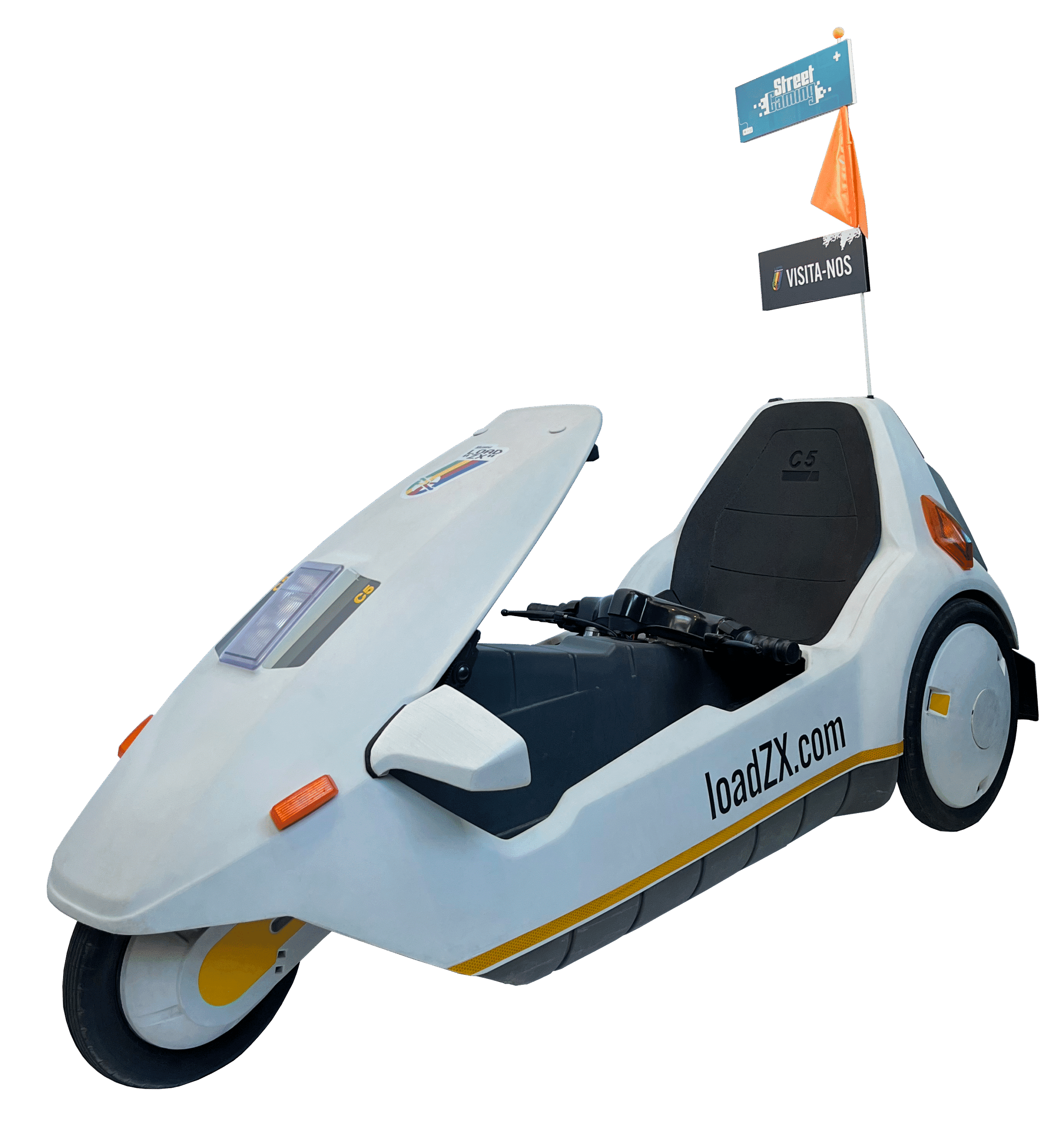
Conceived by Sir Clive Sinclair as a vision of quiet, low-cost urban transport, the C5 was a small electric tricycle with a low, reclined driving position and handlebar steering. Its design began in the 1970s and, thanks to 1983 legislation, could be driven on British roads without a licence. The C5 was the only vehicle produced by Sinclair Vehicles. Its limited speed and range, exposure to the weather, and low visibility made it unpopular, and sales fell sharply. Despite this, the C5 anticipated features of modern electric vehicles, showing early attempts to rethink personal transport for a cleaner, more sustainable future.
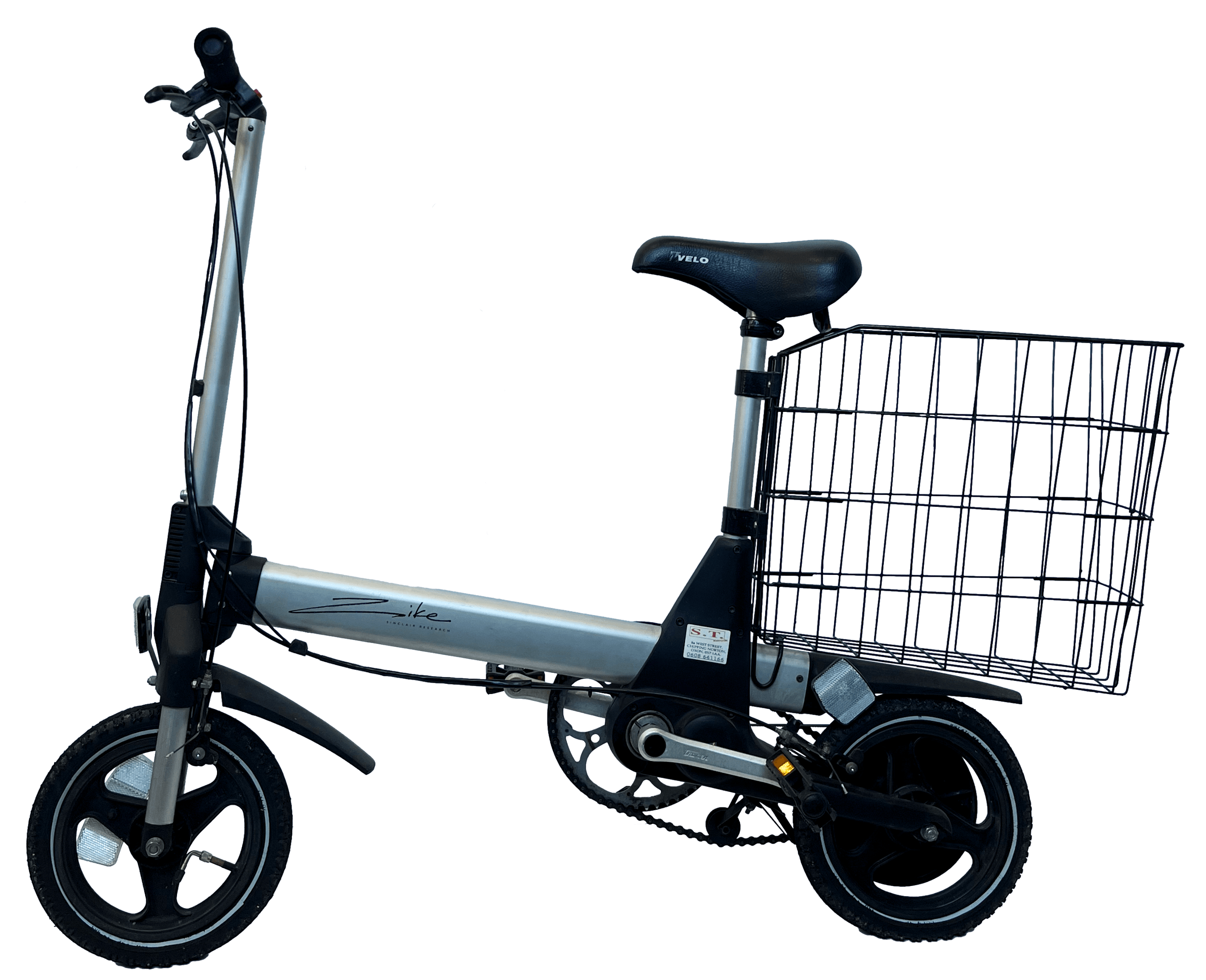
The Zike was the first of Sinclair Research’s electric bicycle projects. Weighing only 11 kg, it carried its motor and rechargeable batteries within the slim frame and was controlled by a three-position throttle on the handlebars. Riders could expect between half an hour and three hours of assisted cycling, with recharging taking about an hour. The system also recovered some energy during braking and freewheeling. Sold at the price of a high-end touring or mountain bike of the early 1990s, only around 2,000 were produced before manufacture ceased. This example carries a rear basket—an optional accessory rather than a standard feature.
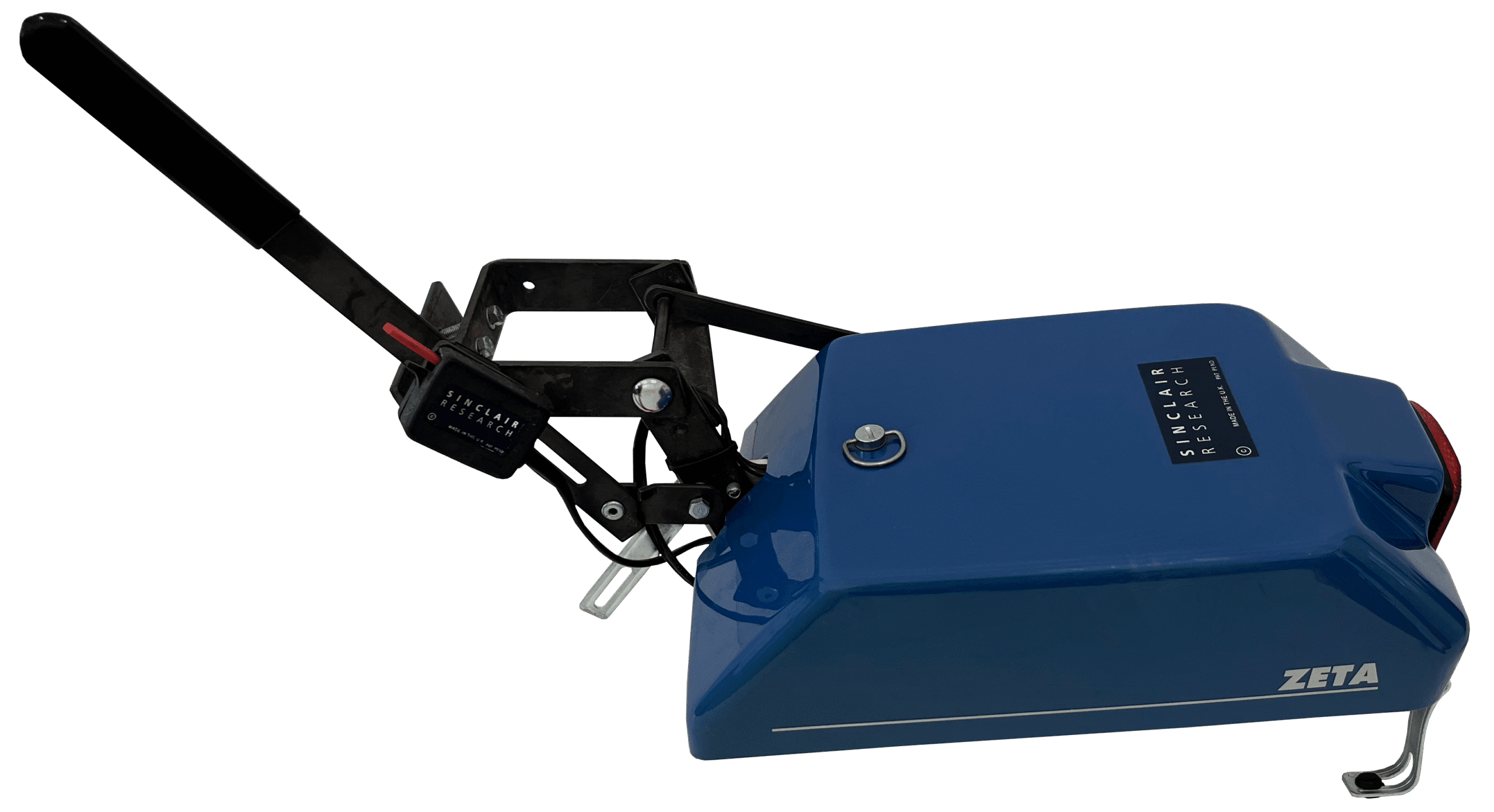
The Zeta I is an ingenious electric power pack that converts an ordinary bicycle into a motor-assisted vehicle. Mounted above the rear wheel, it pressed a belt drive against the tyre, engaged by a handlebar switch to help riders pedal at speeds up to 15 mph. Lightweight, simple to fit, and requiring no licence, tax, or insurance, it could be used by anyone over 14. Building on the technology of Sinclair’s earlier Zike electric bicycle, the Zeta offered a practical, eco-friendly retrofit kit at a time when few such devices were available.
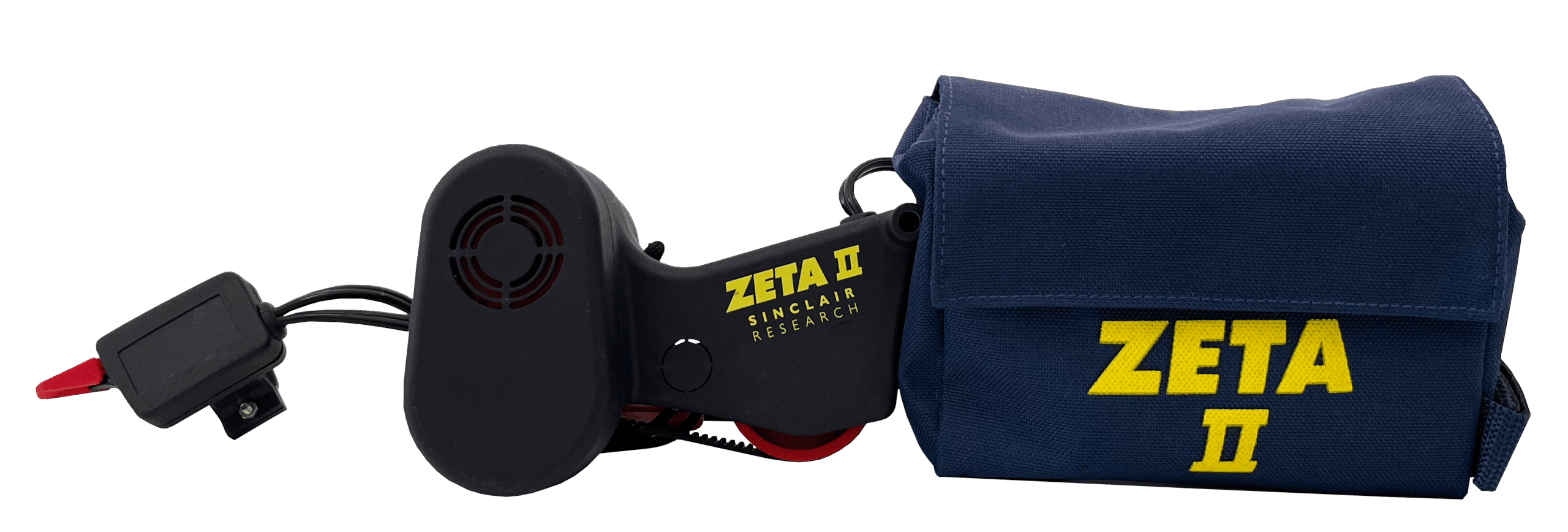
The Zeta II was a smaller, lighter redesign of Sinclair’s bicycle power pack, mounted over the front wheel and supplied with a pouch for its rechargeable battery. Its patent pending belt-and-pulley system engaged the tyre when activated by a switch and lever on the handlebars, and offered a motorised boost of up to 12 mph, with range extended by pedalling. Advertised as quick to install with simple tools and marketed as a cheaper alternative to purpose-built electric bicycles, it aimed to make everyday cycling easier and more enjoyable.

The Zeta III was the final model in Sinclair’s series of bicycle power packs. It combined motor, battery, and charger into a single unit that mounted over the front wheel and clipped to the handlebars. Promoted as easier to fit and remove than earlier versions, it featured a quieter, more powerful motor, an improved gearbox, and a patent pending belt drive with built-in mudguard to deflect spray. The Zeta series and other Sinclair transport-related inventions are discussed in Kevin Desmond’s book “Electric Motorcycles and Bicycles”, as part of the wider history of electric transport.
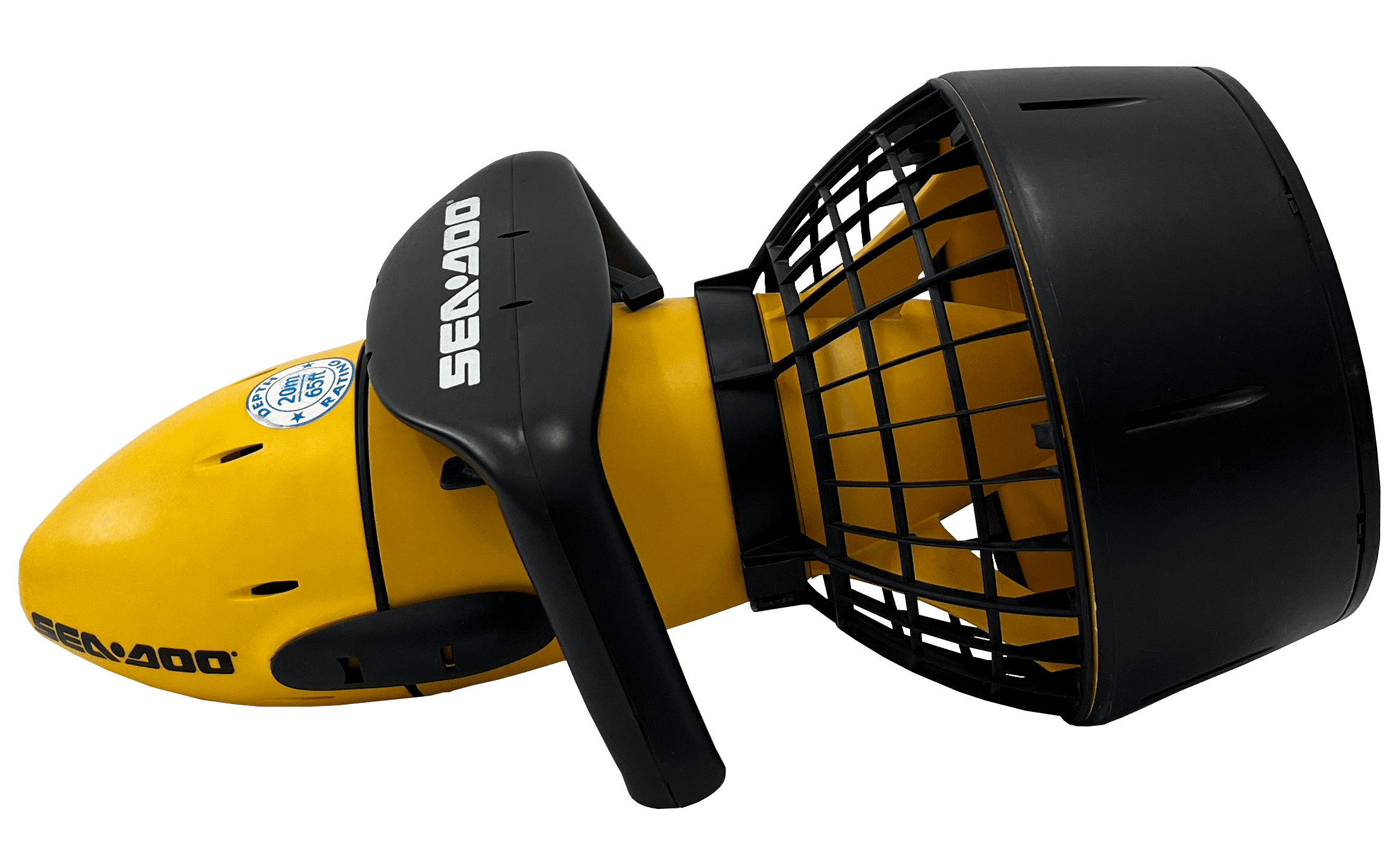
This lightweight electric scooter was designed to to make underwater exploration easier for snorkellers and divers. Created by Sinclair Research in partnership with Hong Kong’s Daka Development and marketed under Bombardier’s Sea-Doo brand, it could propel a swimmer at around 3 km/h for up to an hour and reach depths of 20 metres. Features included a buoyancy regulator, rechargeable battery, and safety cut-off switch. The SeaScooter marked a surprising move by Sinclair into recreational marine technology, and proved a commercial success.

The Wheelchair Drive Unit (WDU), also referred to as the ZA20, is a motor-assist device designed to help attendants push folding or rigid wheelchairs, especially on ramps and slopes. Weighing about 4.5 kg, it attached to the bottom rear of the chair, driving a small powered wheel against the ground, with its battery pack mounted on the frame and a single control fitted to a push handle. Sold at a fraction of the cost of a conventional powered wheelchair, it offered an affordable way to upgrade existing models. Developed with Daka Development, its lightweight, removable design anticipates today’s power-assist wheelchair accessories, which continue to ease strain for carers and users alike. This example includes its original storage pouch.
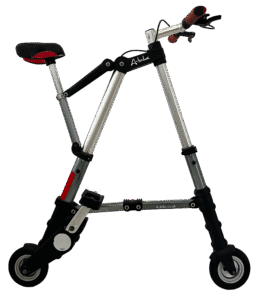
The A-Bike is a compact folding bicycle designed for short urban journeys. It was the result of a five-year research and development programme aiming to change how city commuters viewed bicycles. Created by Clive Sinclair with Daka Development, it weighs about 5.7 kg and folds to rucksack size, though folding takes practice. Its six-inch wheels use a twin-chain system to allow near-normal pedalling. Marketed as ultra-light and portable, it drew attention for its ingenuity, though reviewers noted frame flex and instability on uneven surfaces. The A-Bike established design principles later refined in models such as the Plus and City.

The A-Bike Plus is a strengthened version of Sinclair’s original folding bicycle, designed for improved durability and comfort. Aluminium tubing reduced frame flex, while a cushioned saddle and upgraded drive mechanism enhanced the ride. Retaining six-inch wheels and a compact fold, it weighs under 6 kg and uses a twin-chain system to maintain pedalling efficiency. Chief designer Alex Kalogroulis, who had worked on earlier Sinclair transport projects including the A-Bike and the Wheelchair Drive Unit, continued to collaborate on the series, refining the models’ lightweight, low-cost approach and influencing later designs such as the A-Bike Electric.
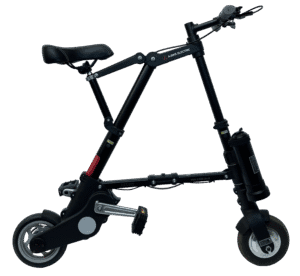
The A-Bike Electric combines Sinclair’s last folding bicycle concept with pedal-activated motor assistance. It features eight-inch wheels, an aircraft-grade aluminium reinforced frame, and a detachable battery and motor pack, offering up to 12 mph and a range suitable for short city journeys. Pedal sensors engage the motor as needed, while the twin-chain system maintains normal pedalling. Weighing under 12 kg, it folds for transport or storage. Launched via a Kickstarter campaign, this model reflects the A-Bike series’ continued innovation by designer Alex Kalogroulis and Sinclair’s enduring contribution to compact urban electric mobility, linking it to today’s urban e-bike culture.
